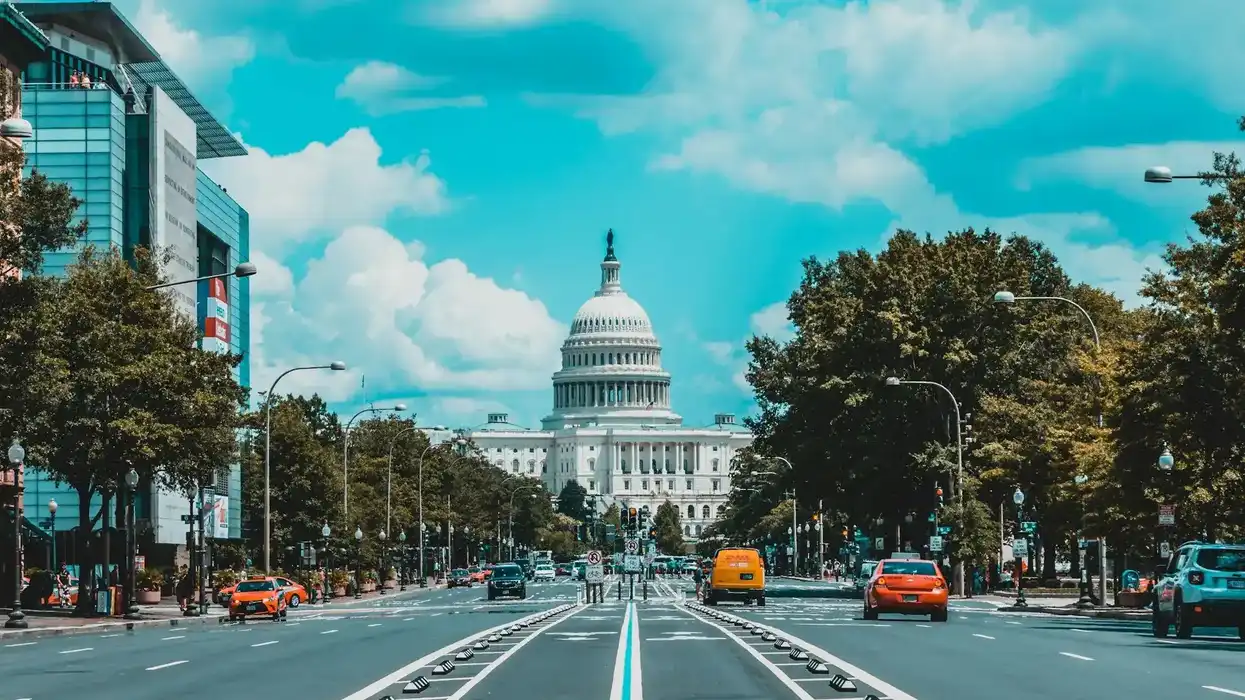Mikulski is an MPA candidate in criminal justice policy and administration at CUNY John Jay College of criminal justice. Mikulski’s research focuses on a variety of issues related to the criminal justice sector. Margaret is also a member of the Scholars Strategy Network.
In 2015, then-15-year-old LaKeith Smith was a part of a group of five juveniles who burglarized homes in Millbrook, Alabama. Police arrived to one such burglary in progress and fired on the group, fatally striking 16-year-old A’Donte Washington, who had charged officers with a firearm. And while it was police officers who shot and killed Washington, Smith was tried and convicted for the death of his associate under Alabama’s felony murder rule, resulting in a 65-year consecutive sentence.
Similarly, 24-year-old Terrell Jones and his friend Larry were involved in a robbery of two strangers in 2005 in Illinois. Larry shot and killed one of the robbery victims—and though Jones did not intend to commit or aid in the murder, he still faced a mandatory life sentence under Illinois's felony murder statute. Neither LaKeith Smith nor Terrell Jones set out to commit a murder or fired a single bullet; both currently remain in prison on felony murder charges (though Smith’s sentence was ultimately reduced to 30 years after a retrial that occurred amidst the post-George Floyd civil rights protests and social media attention.) These cases are prime examples of the felony murder rule, which 45 states currently use to trap youth in the criminal justice system for decades, if not their whole lives.
What is Felony Murder?
Felony murder laws allow any person who is accused of committing a felony-level crime to be charged with murder if a death results from any action that occurs during the commission of that felony. Felony murder, which is definitionally unplanned and unintentional, is thought to be a less severe charge than first (premeditated, intentional) or second degree (unplanned, intentional) murder; legally, however, felony murder is still sentenced under first degree murder guidelines—mandating excessive sentences, with natural life sentences with or without possibility of parole as the extreme.
The history of this law is murky: While some trace it back to the 1820s and believe it to be derived from English Common Law, a Michigan Supreme Court ruling citied it as “a historic survivor for which there is no logical or practical basis for existence in modern law.” The United States is the only country that still utilizes the felony murder law—at both the federal level and in 45 states along with the District of Columbia—and it can be applied to both juveniles and adults. Most states, including the District of Columbia, do not have a required burden of proof, and few states require proof of intentionality to consider murder.
Felony Murder Laws Disproportionately Affect People of Color, Trap Youths
With this law in place, there is no difference between someone who actually commits a murder during the commission of a felony and their co-defendants, who may have had no intention toward and no concrete hand in whatever death occurred. We also know that this charge disproportionately affects women, people of color and youths under 25.
There is currently no national data regarding the number of individuals incarcerated on felony murder charges; however, a 2022 Sentencing Project report was able to source data from Pennsylvania, Michigan, California, Minnesota, Missouri and Washington DC. Among these six jurisdictions, felony murder convictions represent a quarter to approximately half of the incarcerated populations. Alarmingly, over 60% of those sentenced under this law in these jurisdictions were under 25 and 80% were Black and Brown individuals—vulnerable populations that are overrepresented in the criminal justice system and incarceration as it is.
The effects of long prison stays on young people and what it even means to so harshly punish decisions made by still-developing brains give cause for special concern when youths are charged with felony murder. And because many youths are being charged with the deaths of others, often their peers, from distributing “bad drugs” (i.e. fentanyl, xylazine), this issue is likely to persist or even increase without intervention. Charging youths with felony murder traps them in the criminal justice system and perpetuates generational cycles of incarceration. Even when youths are exempt from life sentences, lengthy sentences still impact their lives through disrupting family/home life and education, and have the possibility of increasing recidivism rates.
Solutions across the Policy Reform Spectrum
Some states are taking steps to address the harms of felony murder. In 2023 in Minnesota, HF 1406/SF1478 would reduce felony murder sentences, and limit the application of first-degree murder charges to defendants who caused a death or aided and abetted “with intent to cause death of a human being,” and second-degree murder to those who were “a major participant in the underlying felony who acted with extreme indifference to human life.”
Under the 2021 SAFE-T Act, Illinois prohibited first-degree murder charges in cases where defendants did not directly commit a murder or have knowledge that it would occur, or where a third-party caused the death, thus narrowing the state’s definition of felony murder—however, this bill will not be applied retroactively. California, in 2018, reformed its murder statute to narrowly focus on the “intent to kill” and eliminated the liability for co-defendants who did not actively participate in the killing; the provisions of this bill were applied retroactively, and those charged with felony murder going forward were allowed to seek lesser sentences. In Maryland ’s 2023 legislative session, SB0652 would prohibit the charge of first degree murder for anyone under 25, thereby reducing sentences for those under 25 who commit a felony.
These state-level efforts represent positive steps, but they are not comprehensive enough to truly address the cycle of incarceration for already high-risk individuals in the system, namely Black and Brown individuals and youth. Currently, only five states —Ohio, Hawaii, Kentucky, Michigan, and Massachusetts—have abolished felony murder. Where repeal is not on the table, comprehensive changes to existing felony murder laws should include: limiting the extent the law may be applied, reducing or excluding persons under 25 years of age that can be convicted, reducing the sentence for individuals who are charged and convicted of felony murder, and ensuring that all these reforms are applied retroactively—a list which, to date, no states have fully implemented. This is no small task, as demonstrated by the lack of state information. Ultimately, for these comprehensive reform efforts to be adopted, the harm of felony murder laws—and the missing state data that would illuminate how these laws are applied—need much more attention and support.
Research and data for this brief are drawn from Nazgol Ghandnoosh, Emma Stammen, and Connie Budaci, “ Felony Murder: An On-Ramp for Extreme Sentencing,” The Sentencing Project (2022); Stuti S. Kokkalera, Beck M. Strah, and Anya Bornstein, “ Too Young for the Crime, Yet Old Enough to do Life: A Critical Review of How State Felony Laws Apply to Juvenile Defendants,” Journal of Criminal Justice and Law 4, no. 2 (2021); and other linked sources.
This writing was originally published through the Scholars Strategy Network.


















